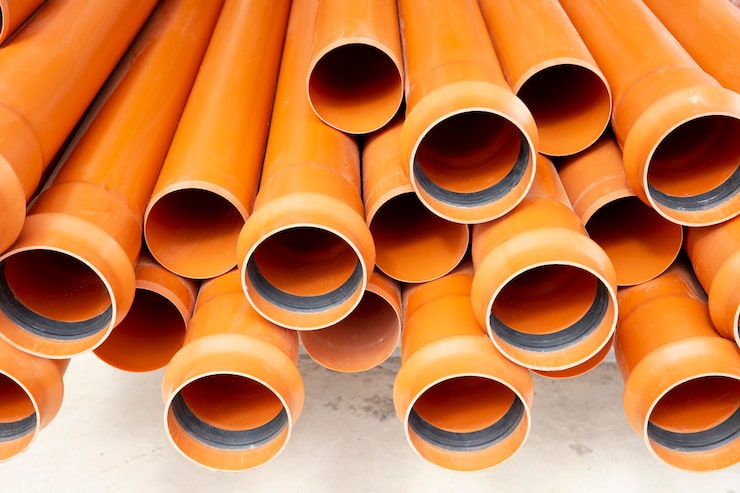Industrial piping refers to the complex network of pipes, fittings, valves, and related components designed to transport fluids, gases, and sometimes solids within industrial facilities. These systems are critical in industries such as oil and gas, chemical manufacturing, water treatment, power generation, and food processing. In essence, industrial piping acts as the circulatory system of a plant, ensuring that essential materials move efficiently and safely from one point to another. Without reliable piping infrastructure, most large-scale manufacturing or processing operations would simply not be possible.
A typical industrial piping system includes not only the pipes themselves but also components like flanges, gaskets, pumps, expansion joints, and supports. Each part must be selected and designed according to the type of fluid being transported, the required pressure, temperature conditions, and applicable safety regulations. The design process also takes into account corrosion resistance, durability, maintenance requirements, and operational efficiency.

The role and importance of industrial piping
The primary role of industrial piping is to transport fluids and gases under controlled conditions. In oil refineries, for example, crude oil needs to be moved through various processing units, often at high temperatures and pressures. In power plants, piping carries steam to turbines, while in chemical plants, it delivers raw materials to reaction vessels and moves finished products to storage.
The importance of industrial piping goes beyond simple transportation. A well-designed piping system ensures operational safety, preventing leaks or bursts that could lead to hazardous situations. It also plays a key role in efficiency, as optimal routing and sizing reduce energy consumption for pumping and heating. In many industries, compliance with strict health, safety, and environmental standards depends on having properly engineered and maintained piping systems.
Key materials used in industrial piping
Choosing the right material for industrial piping is essential to ensure longevity and performance. The most common materials include:
Carbon steel – Known for its strength and cost-effectiveness, often used in high-pressure and high-temperature applications.
Stainless steel – Resistant to corrosion and suitable for environments with moisture, chemicals, or extreme temperatures.
Alloy steel – Designed for specialized applications requiring higher resistance to heat or specific chemicals.
Plastic piping (PVC, CPVC, HDPE) – Lightweight, corrosion-resistant, and used in lower-pressure systems or where chemical resistance is vital.
Copper and brass – Often found in systems requiring antimicrobial properties or where aesthetic finishes matter, though less common in heavy industry.
Each material has specific benefits and limitations. For instance, stainless steel is excellent for corrosive environments but comes with higher costs, while carbon steel is economical but requires protective coatings to resist rust.
Design considerations for industrial piping systems
Designing an industrial piping system involves careful planning and adherence to engineering standards. Engineers must consider:
Flow rate and pressure – Determining the correct pipe diameter and wall thickness to handle the required volume and pressure.
Temperature range – Selecting materials that can withstand both operating and potential extreme temperatures.
Corrosion resistance – Choosing coatings or materials that can resist the fluids or gases being transported.
Flexibility and expansion – Incorporating expansion joints or loops to account for thermal expansion and contraction.
Maintenance accessibility – Ensuring valves, filters, and critical sections are easy to inspect and replace.
Regulatory compliance – Meeting international and local standards such as ASME, ANSI, or ISO specifications.
A well-designed system not only meets immediate operational needs but also anticipates future expansion or changes in production requirements.
Applications of industrial piping
Industrial piping is found in nearly every sector of manufacturing and processing. Common applications include:
Oil and gas industry – For transporting crude oil, refined products, and natural gas.
Chemical processing – For moving raw chemicals, solvents, and finished products safely.
Power generation – Steam piping in thermal power plants and cooling systems in nuclear or hydroelectric plants.
Water treatment facilities – For delivering water through various purification stages.
Food and beverage industry – For sanitary transport of liquids and semi-liquids in compliance with hygiene standards.
Each application has its own set of technical challenges, such as preventing contamination in food-grade systems or managing high pressures in petrochemical plants.
Installation and maintenance practices
Even the best-designed industrial piping system can fail prematurely if not installed correctly. Installation involves precise alignment, welding or joining techniques suited to the material, proper sealing, and secure support structures. After installation, regular inspection and maintenance are essential to ensure ongoing safety and performance.
Maintenance activities may include:
Visual inspections for leaks, corrosion, or mechanical damage.
Non-destructive testing methods such as ultrasonic testing to detect hidden flaws.
Pressure testing to ensure integrity.
Replacing worn gaskets, seals, or insulation.
Cleaning and flushing to remove scale, deposits, or contaminants.
Proactive maintenance helps extend the service life of the system and prevents costly unplanned shutdowns.
Safety and regulatory compliance
Industrial piping systems must comply with rigorous safety and quality standards to protect workers, equipment, and the environment. Organizations such as the American Society of Mechanical Engineers (ASME) and the International Organization for Standardization (ISO) provide guidelines for design, fabrication, and testing.
Safety considerations include:
Using materials with verified pressure and temperature ratings.
Installing relief valves and other protective devices.
Clearly marking pipes with flow direction and content identification.
Training personnel in safe operating and maintenance procedures.
Compliance with regulations is not just a legal requirement—it also enhances reputation and trust in the marketplace.
Future trends in industrial piping
With advances in technology, industrial piping systems are becoming more efficient, safer, and environmentally friendly. Some emerging trends include:
Smart monitoring systems using sensors and IoT devices to track pressure, temperature, and flow in real time.
Improved corrosion-resistant materials that reduce maintenance and extend service life.
Modular piping systems that allow faster installation and easier expansion.
Sustainable design practices to reduce energy consumption and carbon emissions.
These innovations are helping industries meet growing demands while adhering to environmental and safety goals.


